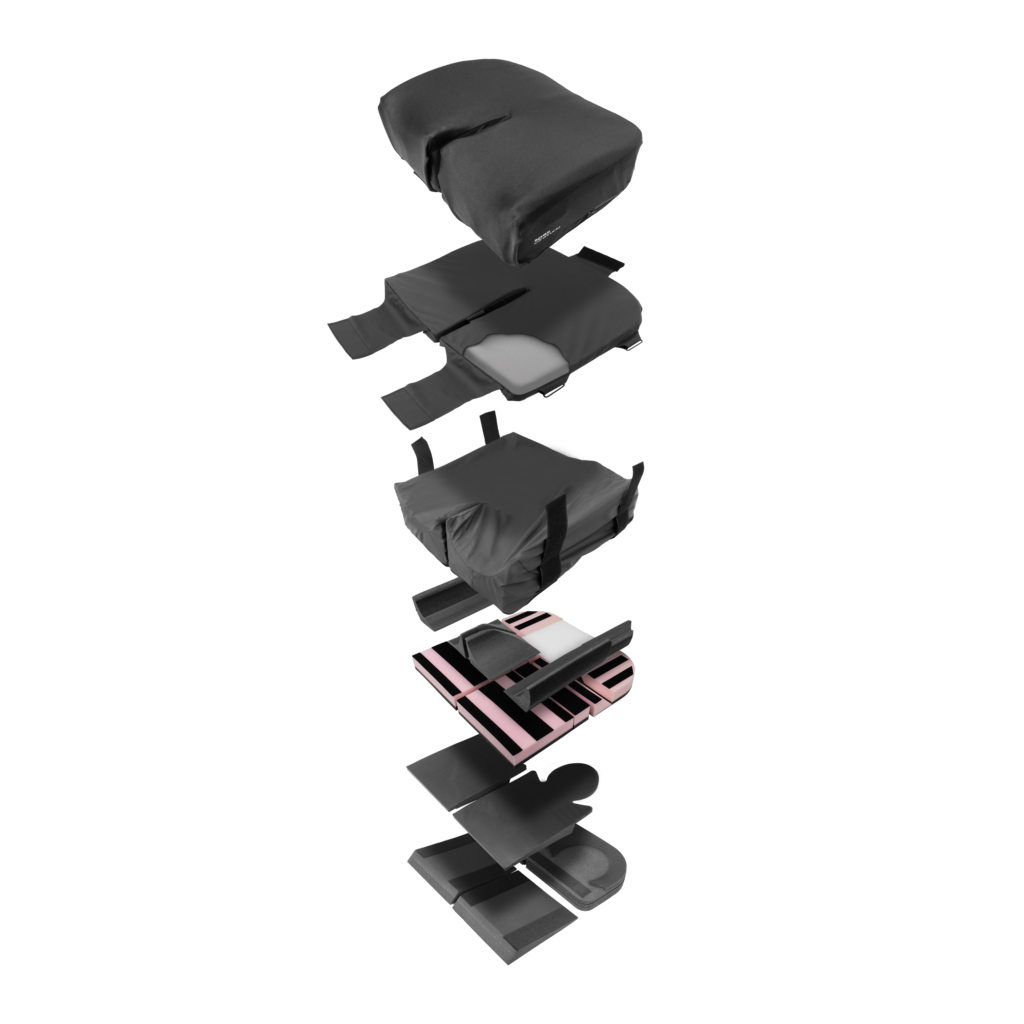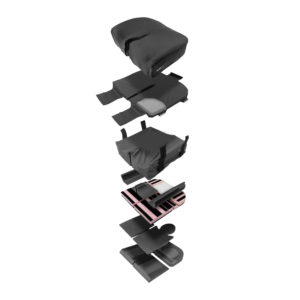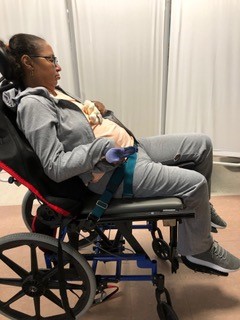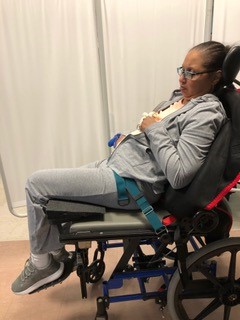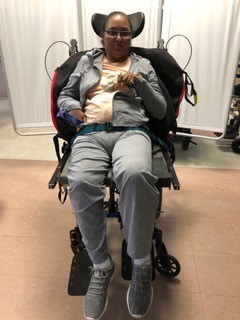Can a foam cushion replace an air cushion in responding to hip flexion asymmetry limitation with leg length discrepancies?
Keywords
Encephalitis; encephalomyelitis, tetraplegia, osteoporosis, gastroesophageal reflux, dysphagia, enteral nutrition, long-term care, nursing care, hip flexion limitation, asymmetrical hip flexion limitation, wheelchair, seating, posture, Spex Flex cushion, stability, seat to back angle.
Abstract
TJ is a 55-year-old woman with complex medical presentation presenting with bilateral hip flexion asymmetry. She resides in long-term nursing care facility and required review of her seating system due to asymmetrical hip flexion limitations and difficulties maintaining positioning on the existing air cushion in the wheelchair which resulted in her sliding down on the seat. The Spex Flex Cushion was introduced to promote stability and maintain upright sitting posture in the wheelchair.
Background
TJ is a 55-year-old woman with diagnoses of encephalitis, encephalomyelitis, tetraplegia, gastroesophageal reflux, dysphagia and osteoporosis. She has a G-tube for enteral nutrition. She had a girdlestone procedure on her right hip in 2011 due to osteomylelitis and failed arthroplasty. She has been residing in long term nursing facilities since 2007 and has been in her current location since 2009.
TJ was first seen in seating clinic in 2007. At that time, hip flexion was 80 degrees bilaterally. She was positioned in a manual wheelchair and modifications were performed to this chair. Her range of motion was maintained over the next few years.
She moved to her current nursing facility in 2009 and in 2010, demonstrated the ability to drive a power wheelchair. Modifications were completed on a donated power wheelchair with tilt to assist with maintaining posture. Range of motion was maintained over the next 3 years even after having a girdlestone procedure on her right hip. In 2013, it was noted that her range was decreasing and hip flexion was 70 degrees on the right and 75 degrees on the left. Wheelchair accommodations were made to accommodate for the change in range with the seat to back support angle opened. She also had a leg length discrepancy from the girdlestone procedure that was accommodated as well.
In 2018, TJ was evaluated for a new power wheelchair with tilt. Hip flexion was 60 degrees on the right and 80 degrees left. Due to the significant difference in hip flexion between the left and right hip and the leg length discrepancy, a custom Roho seat cushion was designed to meet her needs. A wedge was used to increase the flexion on the left side and decrease some of TJ’ sliding down on the seat cushion. An air cushion was used to assist in maintaining good skin integrity. She had been using a Roho cushion for many years and had not had any skin integrity issues.
